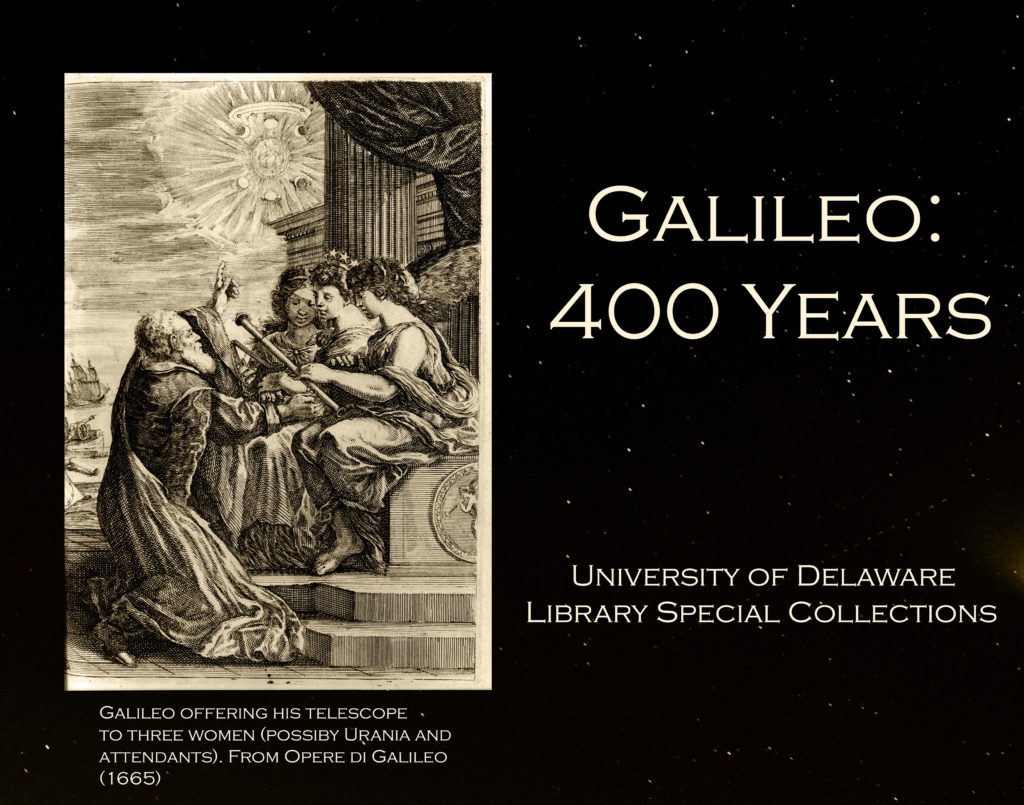
This exhibition commemorates the 1616 edict of the Catholic Church rejecting the notion that the sun is the center of the universe and that the earth is a planet orbiting the sun.
From the time of the Greek philosopher Aristotle (b.384 - d.322 B.C.), Europeans accepted geocentrism (the belief that the earth is the center of the universe). In 150 A. D., Greco-Egyptian astronomer Ptolemy proposed that the stars were set into a celestial sphere, which rotated around the earth. The movement of the stars and planets around the earth was believed to explain their rising and setting. The “Ptolemaic system” was widely accepted for over 1500 years.
Italian astronomer Galileo Galilei (1564 – 1642) was not the first person to suggest that the earth orbited the sun. The Polish astronomer Copernicus had suggested a heliocentric (sun-centered) universe in the 1500s. Also, Galileo was not the inventor of the telescope. The German- Dutch lens maker Hans Lipperchey received the first patent for a “spyglass” in 1608. However, a few months later Galileo improvised on Lipperchy’s design and created a much more powerful instrument, which he used to observe things that Copernicus had not been able to see, such as the moon’s crators, sunspots and the phases of the planet Venus.
Galileo’s observations suggested to him that Copernicus had been correct in suggesting that the earth orbits the sun.
Curated by Curtis Small, Jr.

